How to use wordpress, wordpress usage tutorial
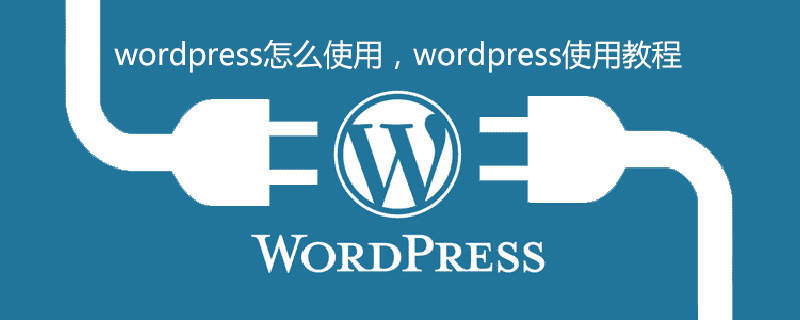
How to use wordpress, wordpress usage tutorial
Preliminary preparation
Buy domain name: What is a domain name? Even the URL of a website that is usually visited, such as "www.baidu.com" is called a domain name. This is an essential preliminary preparation.
Buy space server: Well-known domestic and foreign brand services For any provider, you can choose to buy a well-known, guaranteed, safe and reliable one, such as Baidu Cloud Host. Of course, it should be noted that when buying a domestic host, you need to consider the filing issue.
Bind the domain name to the host server. These operations can be performed in the background provided by the service provider.
Installation of WordPress
Download the latest version of the WordPress compressed package from the WordPress official website, and upload the compressed package to the root directory of the website through the FTP tool.

Access directly through the domain name, uninstalled WordPress will automatically jump to the installation interface

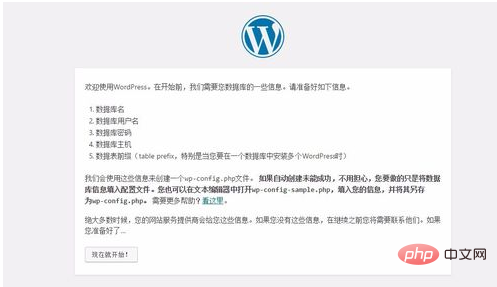
Fill in the database information, which is provided by the server provider and can be viewed in the backend of the server you purchased
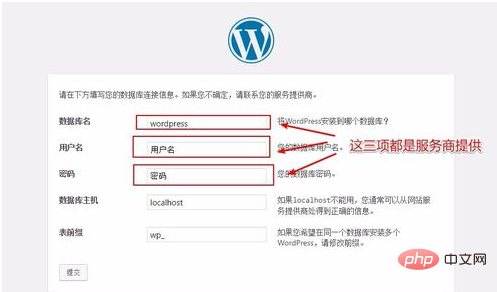
Fill in the website backend information, as well as the administrator backend information, settings Manage account password
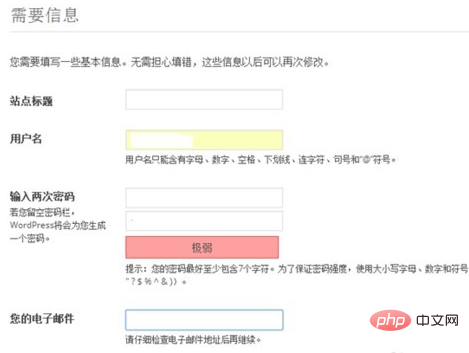
Complete installation and log in to the backend
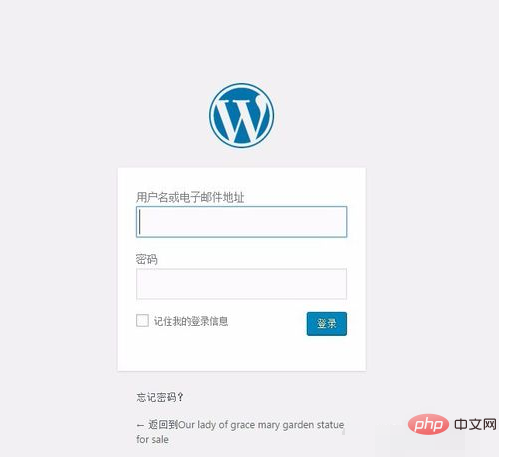
WordPress backend
Let’s first understand the structure of the backend

Category is a column used to create categories and publish articles
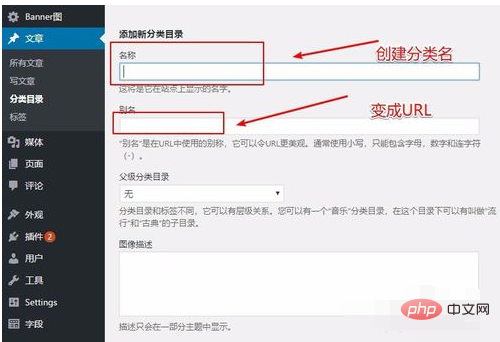
How to publish an article
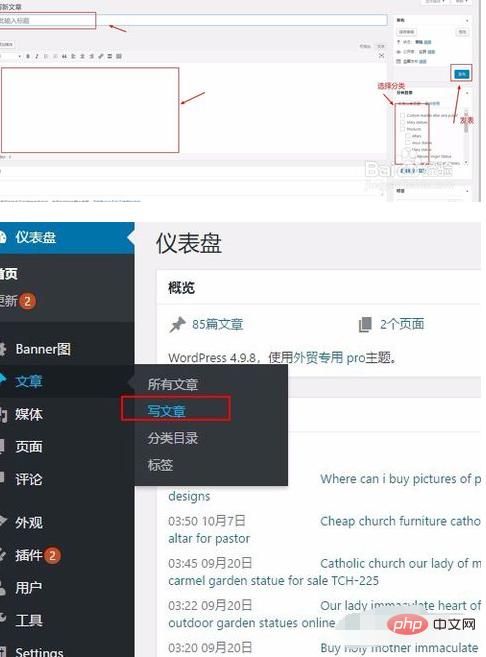
The page is used to place some single pages, such as about us, company profile, etc. on the corporate website
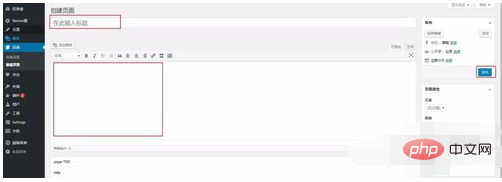
The official introduction is as follows:
User> Your User Profile - Set the user information you want to publish on your website
Your User Profile> Author and Users - If applicable, add the authors and users who will use your site
Settings > General - Set your site name and other information
Settings > Compose - Set the settings you compose Article options
Settings> Reading - Set the number of articles to display on the homepage, categories and in your feed
Settings> Comments - Enable or disable comments and how to handle them
Articles> Categories - Add some new categories to your original category list
Articles> Edit - After you finish writing some articles, this will be where you edit , remove the place to manage them
Appearance> Theme - Change the look of your site?
Settings> Pages - Add a new [[[zh-cn:page|page ]], or two pages like "About Me" or "Contact Me"
Articles> Add New Article - Start adding content to your site
The above is the detailed content of How to use wordpress, wordpress usage tutorial. For more information, please follow other related articles on the PHP Chinese website!

Hot AI Tools

Undresser.AI Undress
AI-powered app for creating realistic nude photos

AI Clothes Remover
Online AI tool for removing clothes from photos.

Undress AI Tool
Undress images for free

Clothoff.io
AI clothes remover

AI Hentai Generator
Generate AI Hentai for free.

Hot Article

Hot Tools

Notepad++7.3.1
Easy-to-use and free code editor

SublimeText3 Chinese version
Chinese version, very easy to use

Zend Studio 13.0.1
Powerful PHP integrated development environment

Dreamweaver CS6
Visual web development tools

SublimeText3 Mac version
God-level code editing software (SublimeText3)

Hot Topics
 PHP vs. Flutter: The best choice for mobile development
May 06, 2024 pm 10:45 PM
PHP vs. Flutter: The best choice for mobile development
May 06, 2024 pm 10:45 PM
PHP and Flutter are popular technologies for mobile development. Flutter excels in cross-platform capabilities, performance and user interface, and is suitable for applications that require high performance, cross-platform and customized UI. PHP is suitable for server-side applications with lower performance and not cross-platform.
 How to change page width in wordpress
Apr 16, 2024 am 01:03 AM
How to change page width in wordpress
Apr 16, 2024 am 01:03 AM
You can easily modify your WordPress page width by editing your style.css file: Edit your style.css file and add .site-content { max-width: [your preferred width]; }. Edit [your preferred width] to set the page width. Save changes and clear cache (optional).
 How to create a product page in wordpress
Apr 16, 2024 am 12:39 AM
How to create a product page in wordpress
Apr 16, 2024 am 12:39 AM
Create a product page in WordPress: 1. Create the product (name, description, pictures); 2. Customize the page template (add title, description, pictures, buttons); 3. Enter product information (stock, size, weight); 4 . Create variations (different colors, sizes); 5. Set visibility (public or hidden); 6. Enable/disable comments; 7. Preview and publish the page.
 In which folder are wordpress articles located?
Apr 16, 2024 am 10:29 AM
In which folder are wordpress articles located?
Apr 16, 2024 am 10:29 AM
WordPress posts are stored in the /wp-content/uploads folder. This folder uses subfolders to categorize different types of uploads, including articles organized by year, month, and article ID. Article files are stored in plain text format (.txt), and the filename usually includes its ID and title.
 Where is the wordpress template file?
Apr 16, 2024 am 11:00 AM
Where is the wordpress template file?
Apr 16, 2024 am 11:00 AM
WordPress template files are located in the /wp-content/themes/[theme name]/ directory. They are used to determine the appearance and functionality of the website, including header (header.php), footer (footer.php), main template (index.php), single article (single.php), page (page.php), Archive (archive.php), category (category.php), tag (tag.php), search (search.php) and 404 error page (404.php). By editing and modifying these files, you can customize the appearance of your WordPress website
 Which version of wordpress is stable?
Apr 16, 2024 am 10:54 AM
Which version of wordpress is stable?
Apr 16, 2024 am 10:54 AM
The most stable WordPress version is the latest version because it contains the latest security patches, performance enhancements, and introduces new features and improvements. In order to update to the latest version, log into your WordPress dashboard, go to the Updates page and click Update Now.
 How to search for authors in WordPress
Apr 16, 2024 am 01:18 AM
How to search for authors in WordPress
Apr 16, 2024 am 01:18 AM
Search for authors in WordPress: 1. Once logged in to your admin panel, navigate to Posts or Pages, enter the author name using the search bar, and select Author in Filters. 2. Other tips: Use wildcards to broaden your search, use operators to combine criteria, or enter author IDs to search for articles.
 What language is used to develop WordPress?
Apr 16, 2024 am 12:03 AM
What language is used to develop WordPress?
Apr 16, 2024 am 12:03 AM
WordPress is developed using PHP language as its core programming language for handling database interactions, form processing, dynamic content generation, and user requests. PHP was chosen for reasons including cross-platform compatibility, ease of learning, active community, and rich library and frameworks. Apart from PHP, WordPress also uses languages like HTML, CSS, JavaScript, SQL, etc. to enhance its functionality.






